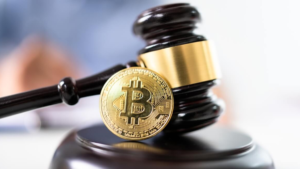Binance updates token cliff period and enhances regulatory compliance

Binance Holdings Ltd. is updating its token listing procedures.
The recent change is aimed at enhancing investor protection on the platform by filtering the tokens listed.
Following various incidents of investors being scammed by unverified digital assets in schemes like rug pulls, leading to significant financial losses, Binance is working to prevent the listing of questionable crypto projects by improving its listing criteria, as reported by Bloomberg.
The exchange’s approach involves adjusting the requirements for crypto projects looking to list their tokens, especially with regards to the “cliff period.”
This period denotes a timeframe where a portion of the total coin supply is locked within a smart contract.
Only after this period elapses do the tokens gradually become available according to a predetermined schedule. Market makers, crucial for providing liquidity, receive allocations of these tokens but encounter limitations on withdrawing them.
Significantly, Binance has increased the required cliff period to a minimum of one year, which is a significant extension from the previous maximum of six months.
Furthermore, the platform is reportedly looking to allocate a larger proportion of tradable tokens for market makers to ensure ample liquidity.
Binance motivations for policy adjustments
“Binance does not enforce lock-in periods for projects listed on our exchange,” a Binance spokesperson informed crypto.news.
“Each project has the autonomy to decide on their token vesting schedule,” the spokesperson continued.
This clarification was provided in response to queries about whether Binance requires lock-ins for a project’s token vesting period.
Additionally, the spokesperson explained the rationale behind these changes: “It is important to note that the primary focus has always been on protecting investors. A longer vesting schedule encourages stronger commitment in projects, benefiting users and the overall ecosystem.”
The adjustments to Binance’s listing policies are not stand-alone measures but are part of a broader initiative to enhance regulatory compliance and investor safety during the platform’s recovery from a challenging year.
In 2023, Binance encountered significant legal challenges, including a lawsuit from the U.S. Securities and Exchange Commission (SEC) for alleged violations of federal securities law and a substantial settlement with the Department of Justice (DoJ).
The regulatory scrutiny culminated in a $4.3 billion settlement and the resignation of co-founder and former CEO Changpeng Zhao.
Source link
#Binance #revises #cliff #period #tokens #regulatory #compliance






